The International Architecture Biennale in Venice is about the art of cleaning up after ourselves.
Carlo Ratti’s end game is to fix the mess we architects have made over the last century. What did we do wrong, who did we overlook, and how to revitalize the natural world that we depleted?
There are lots of impactful projects populating “Intelligens. Natural. Artificial. Collective.” the staccato term used for this year’s International Architecture Biennale in Venice. Everywhere you look there are plenty of nifty proposals to address a plethora of planetary and cosmic challenges. Nonetheless 750 projects dispersed in every corner of the Arsenale makes it difficult to reach a clear consensus, are we in the realm of utopia? science fiction? or some fungible combo? This year’s Biennale director Carlo Ratti, an architect of many talents, wants us to tap into the vast pools of common intelligence—be they wet and organic, dry and artificial or simply collectively social. But should we be more reassured or more alarmed by all this unrestrained brainpower?

For those who come to the Biennale to get their architecture fix and zone out on Venetian Spritzes, this exhibition is really the perfect thing. Its all thumbs up, there is something for everyone, nature, tech, and a much remiss return to the architectural fundamentals. For others, who believe the Biennale is where you can reach a kind of architectural karma, this edition might be more disappointing. There is no hitting that “moment of truth,” where everything suddenly makes sense. Yes when you enter into the sweaty and gloomy air-conditioned nightmare (Raumlabor’s spatial reference to the American author Henry Miller?) at the beginning of Le Corderie you experience a “gotcha moment” but as soon as you escape you stumble into an immense bed of bacteria (a cringy reference to the Invasion of the Body Snatchers?). In other words, no welcoming message, no somatic pill to make it all go away, just lots and lots of stuff to puzzle over and figure out.

In truth, the Biennale makes a lot more sense if you accept that Carlo Ratti’s end game is to fix the mess we architects have made over the last century. What did we do wrong, who did we overlook, and how to revitalize the natural world that we depleted? So there are a lot of displays on recycling, that act as a sort of architectural corrective for the past-tense, along with more attention paid to the provenance and manufacture of materials. There is a multitude of presentations on overlooked indigenous and local cultures that have been under-documented or ignored, whose environmental practices turn out to be a whole lot more efficient and meaningful than what we in the Modern West have grown accustomed to. And a lot of planting, given that we have finally understood that nature is the only hope for human survival we can actually count on.

But as potent as Ratti’s take on hybrid intelligence might seem to be, many of the projects displayed are, to say the least, deeply problematic. Because Carlo Ratti, by enthusiastically accumulating all these cutting edge projects into one immense space seems to have overlooked a much more disturbing legacy that historically underpinned these kind of turn of the century exhibitions in the first place. While this edition of the Biennale might come across as some promenade through a futuristic architectural green market featuring modern day soothsayers and digital country criers, echoes of a more troubled past are clearly evident. The Venice Biennale, like its 19th century cousins in England, France, and the US, was built to celebrate national strength through sovereign rule. Behind the monumental fair grounds and displays of national craft was a more egregious message: imperial and colonial expansionism, cultural appropriation, the subjugation of native peoples along with the unconditional extraction of resources and wealth.
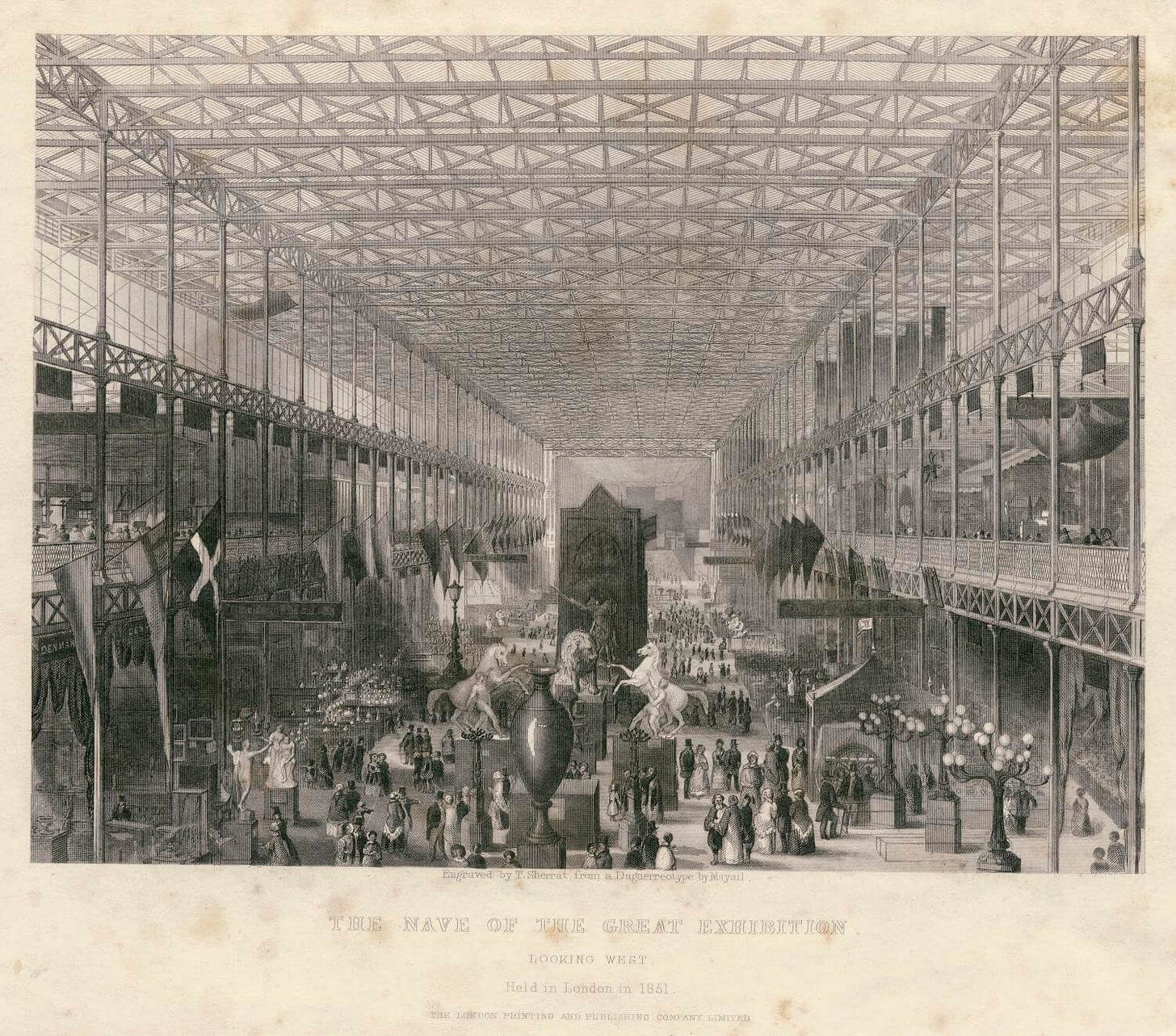
Specifically, there are more than a number of dog whistles in this Biennale that could have been avoided: especially egregious are the kind of mid 19th century Universal Exhibition mis-en-scenes that come very close to espousing the colonial practices that should have been put permanently to rest by now. I rather not get into too many specifics here, but inviting indigenous artisans to work in native dress on a white man’s project (such as for example the “Ancient Futures” live demonstrations by the Danish firm BIG set inside La Corderie) echoes distant colonialist practices first introduced in 19th century European and North American international fairs. How is it possible that these holdover practices from another century are on display without some kind of critical rethink? And while we are at it, should we show robots some dignity as well? How would any of these more advanced AI robots actually react when they finally experience their own prise de conscience after realizing they are merely objects of entertainment for an audience of humans?
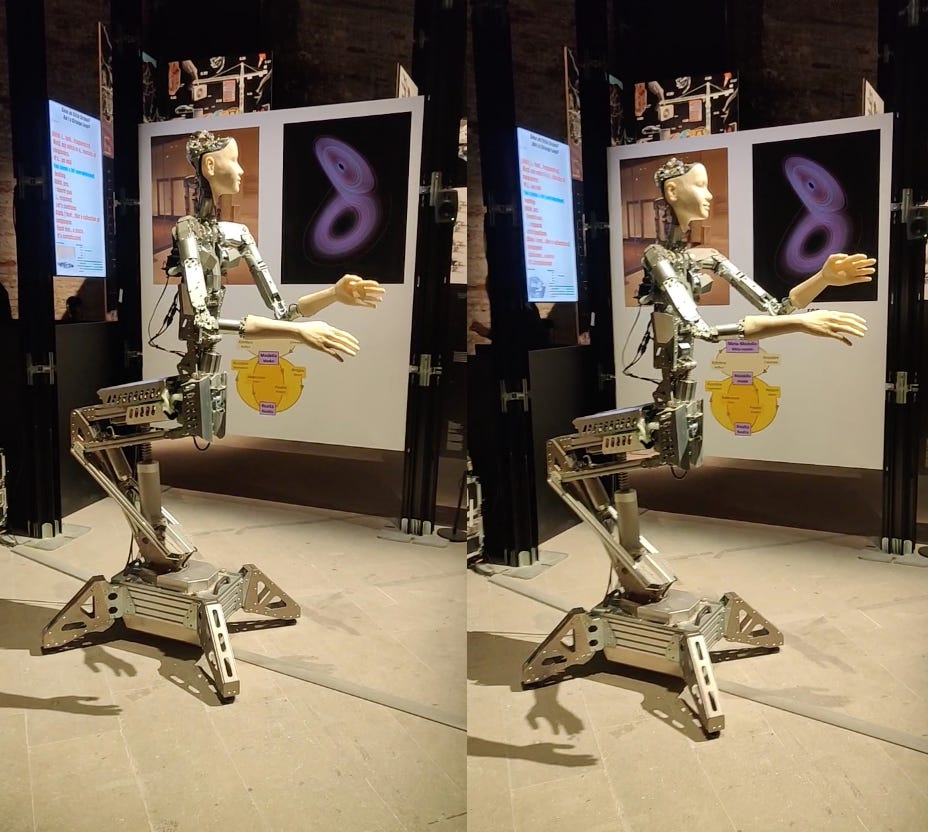
The conversations I had with friends and colleagues who I ran into while cutting across the Venetian backstreets and exhibition corridors were often about the previous Architecture Biennale, directed by Lesley Lokko. As far as I am concerned Lokko’s “The Laboratory of the Future” had gotten a bad rap. Her exhibition concept sensibly addressed global inequalities and historical social injustices, reaching out to audiences rarely exposed to these kinds of counter propositions on architecture. Despite recent and unsettling “setbacks”— the rise of the global far right, the anti-woke campaigns and the tragic return of epochal warfare, Lesley Lokko’s exhibition gave us all a fleeting glimpse of what a better future might just look like.
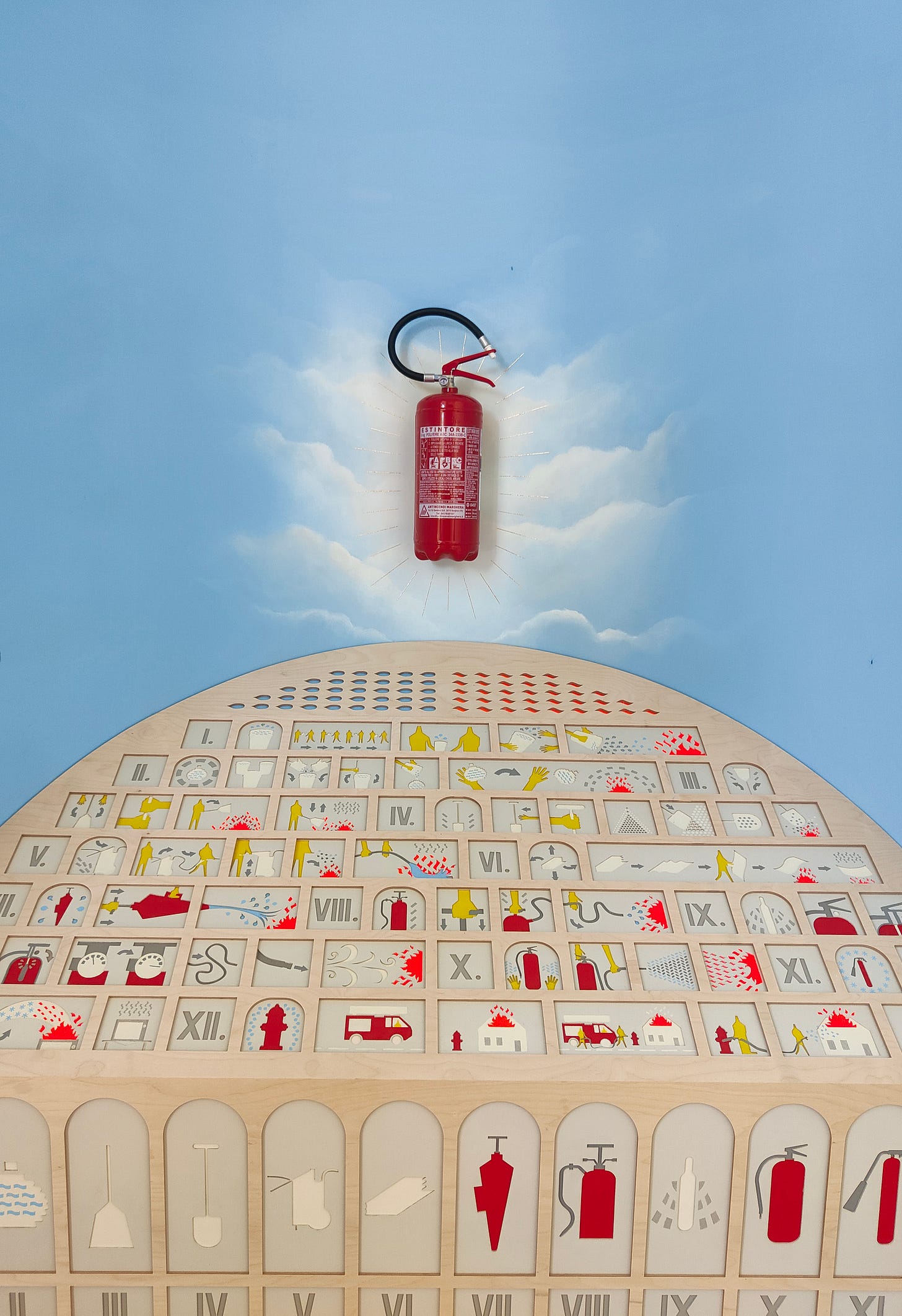
The national pavilions have largely fared well in this latest Biennale edition and I will definitely dedicate another newsletter (and an AN press article) to look more closely at a few of them. These include the Polish Pavilion, a real treat on the mystique of homemaking, the Hungarian Pavilion, on architects who do anything but architecture, the Brazilian Pavilion, a kind of necessary archaeological treatment of the past, the Danish Pavilion an introspective forensic unbuilding project, the Belgium Pavilion, a place where nature becomes the de-facto architect and humans are basically there to measure the results. Very few pavilions have taken on social issues as has been the practice in the past: the Austrian Pavilion is really a tale of two cities in a real Dickensian sense, and then there is the odd example of the Japanese Pavilion: a self talking building that reminds me of a project by the sixties Radical Design group Archizoom Associati, and their “Grey Room Environment” created for the Museum of Modern Art back in 1972—an empty box that talked imaginatively to visitors.
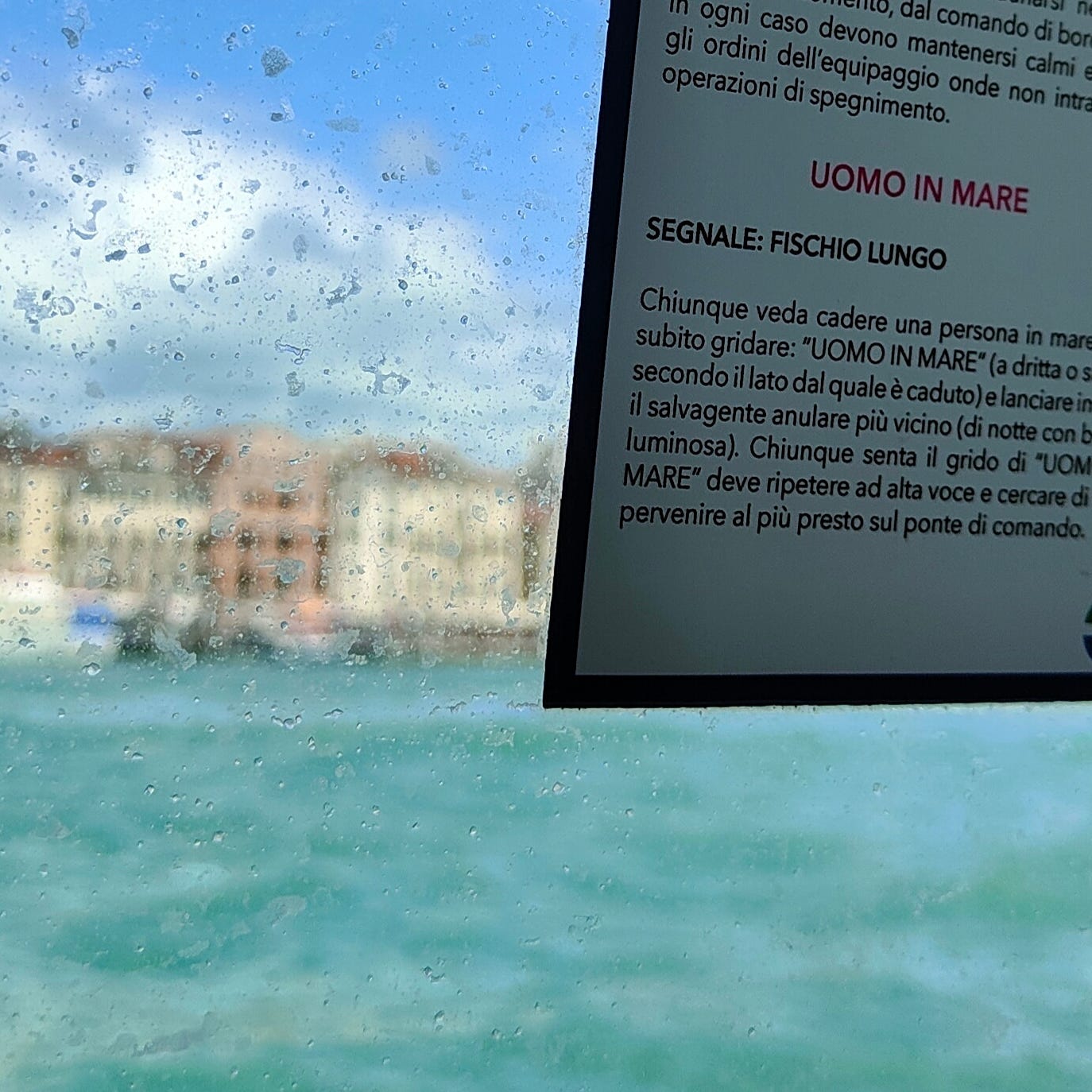
This 19th edition of the Architecture Biennale in Venice will, more or less like its predecessors, leave a lasting mark, forcing architects to own up to what they have done: we bear a disproportionate burden for the hefty mess that the planet is in right now. For sure we need all the intelligence we can muster to fix what’s broken and clean up what’s possible. Yet who but architects are more capable than most anyone of accomplishing this task?
Acknowledgements: Thanks to G. Penzo for providing some insightful comments while we trudged up and down Venice. Also thanks to Christina Pech and Thordis Arrhenius from Stockholm for getting me to go to the very end, Jack Murphy, executive editor at the Architect’s Newspaper (I am filing my report very soon!), and a number of curators and participants who were kind enough to take time to fill me in on their projects.

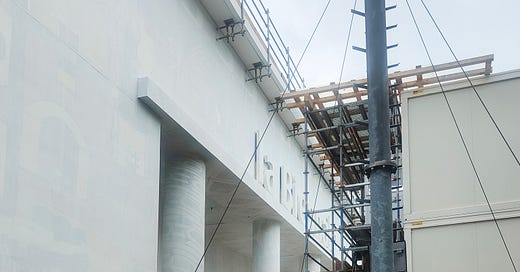



Thanks Peter: with your review, it's as if I was at the Biennale!